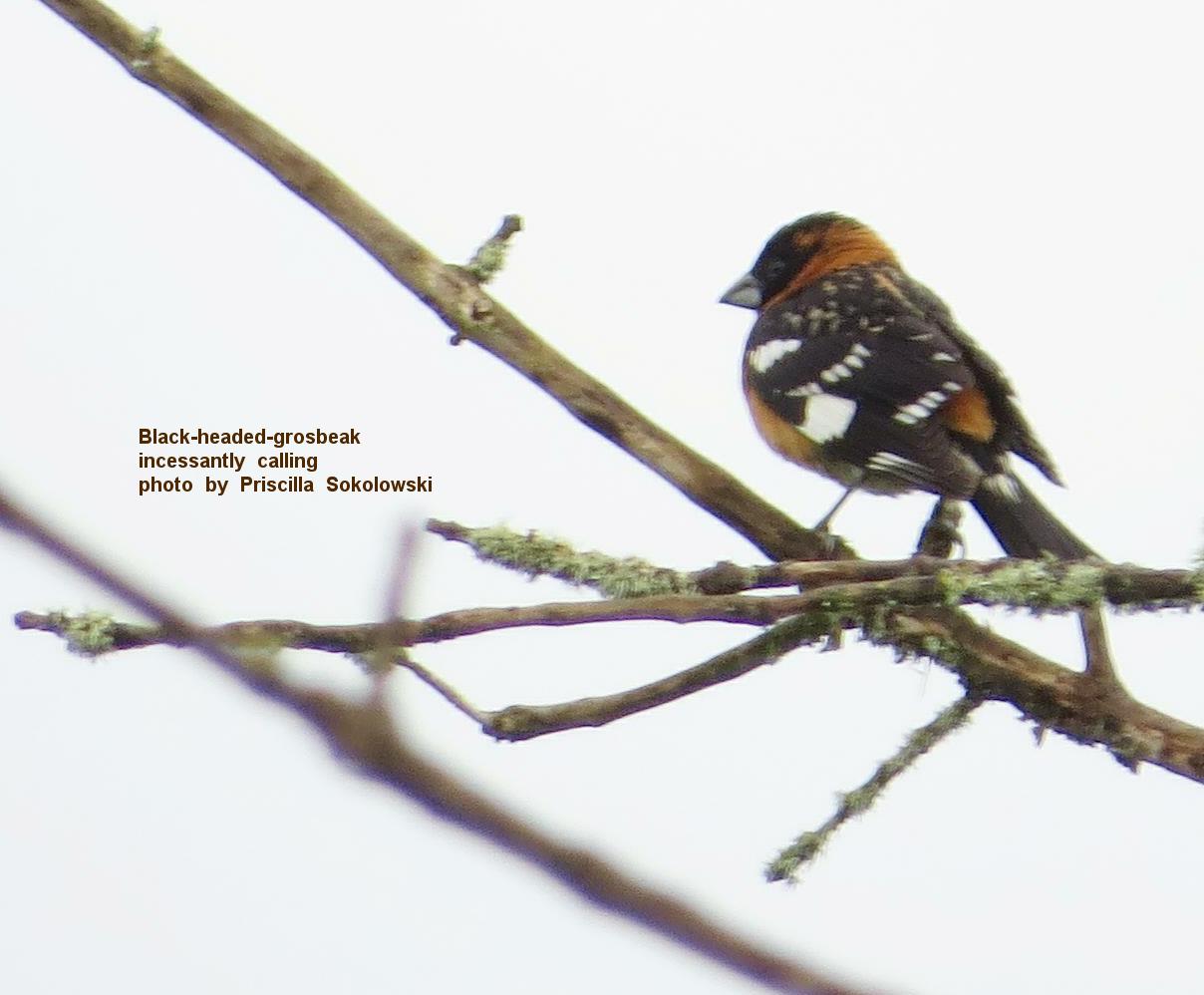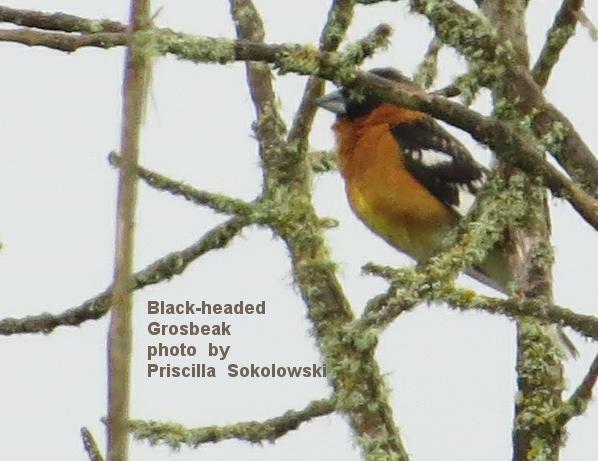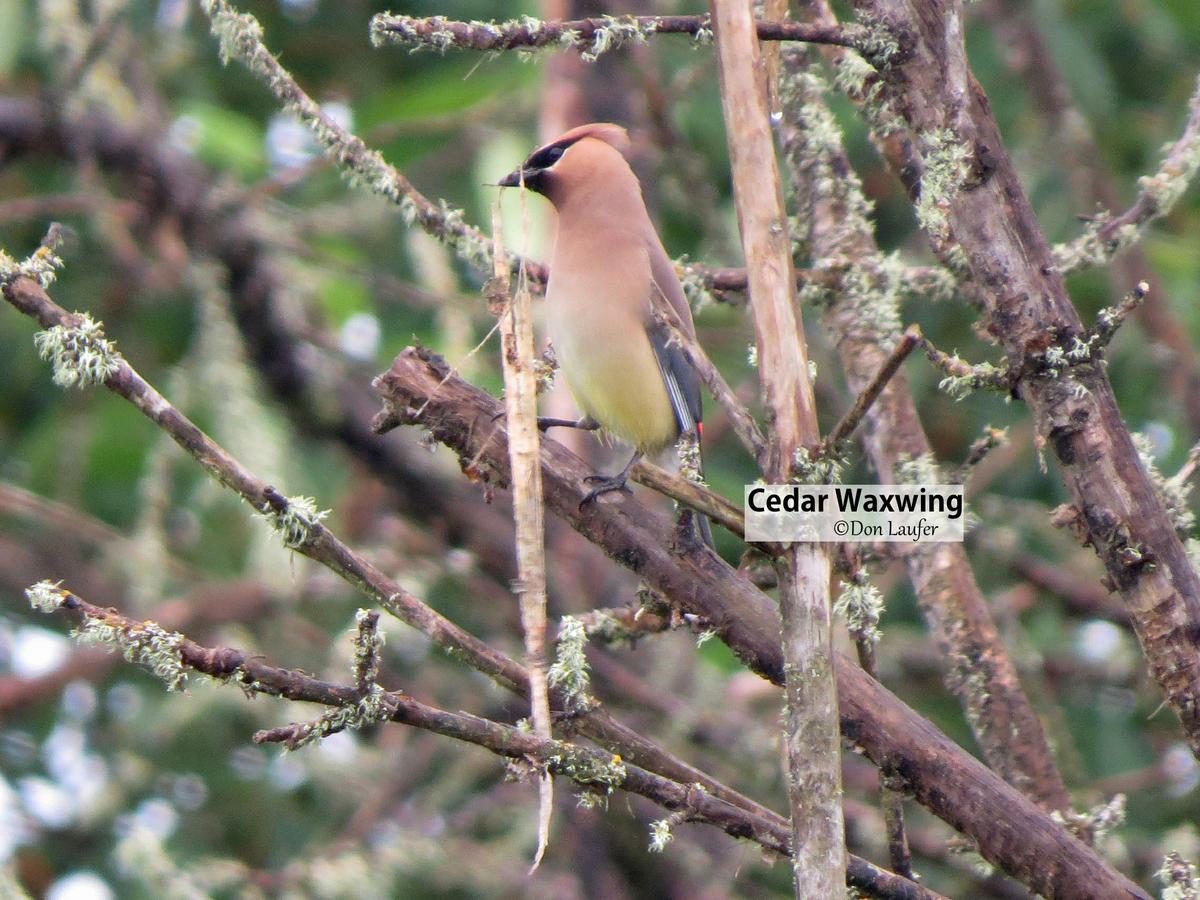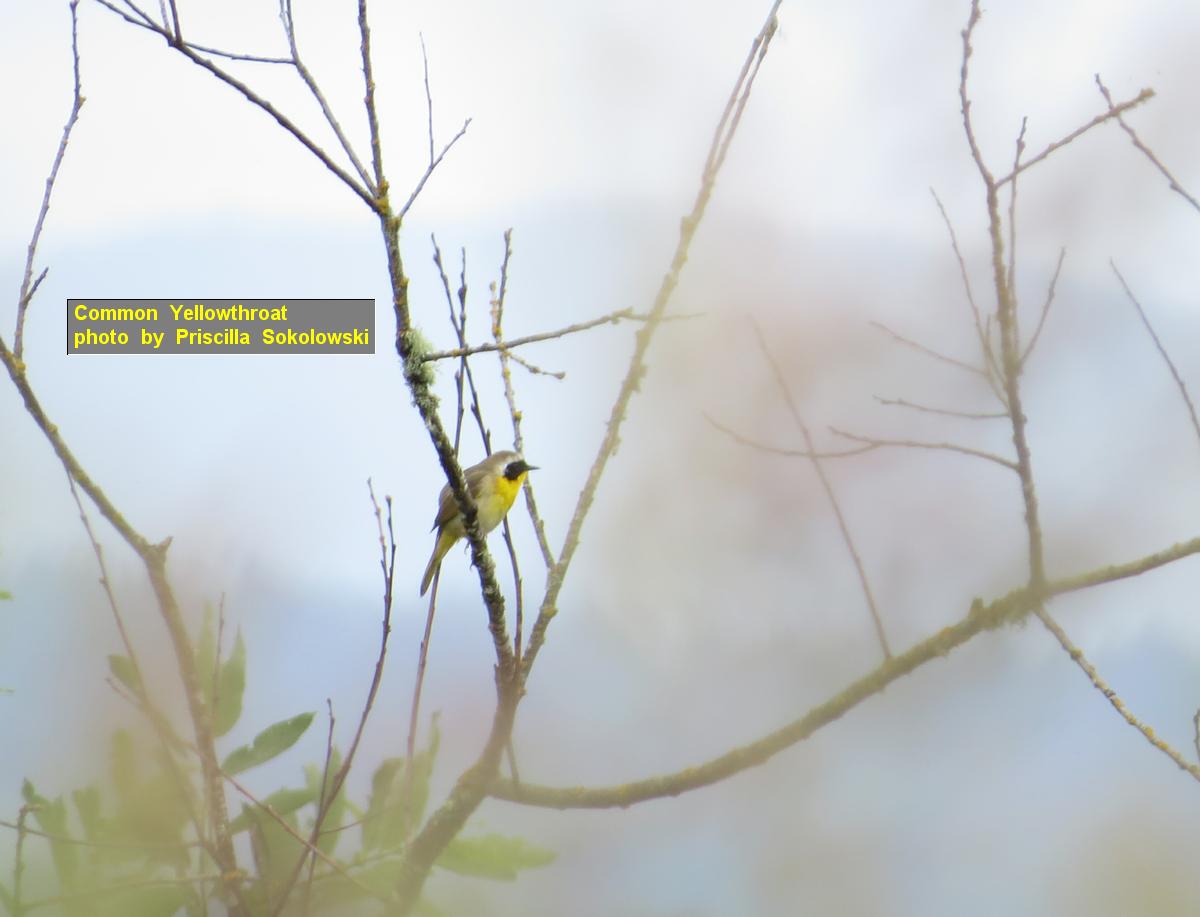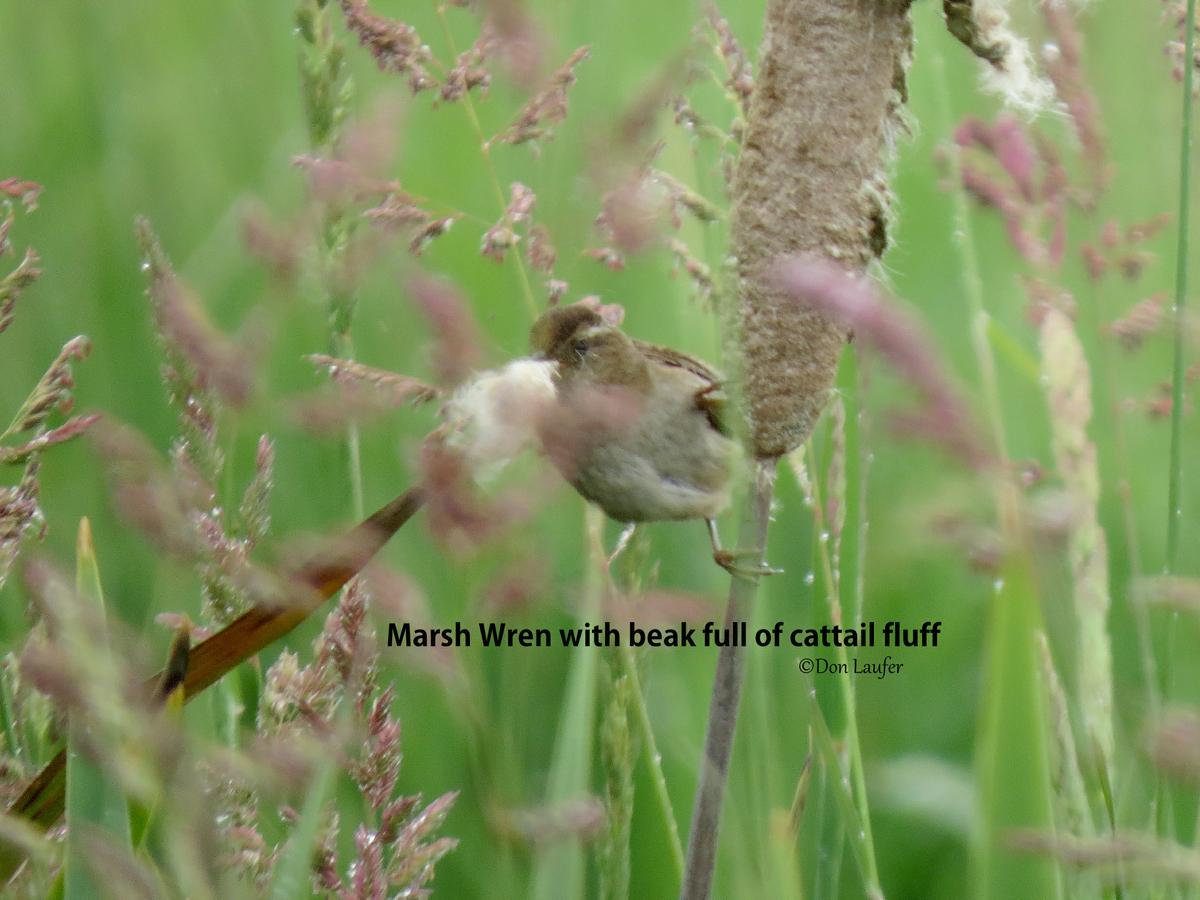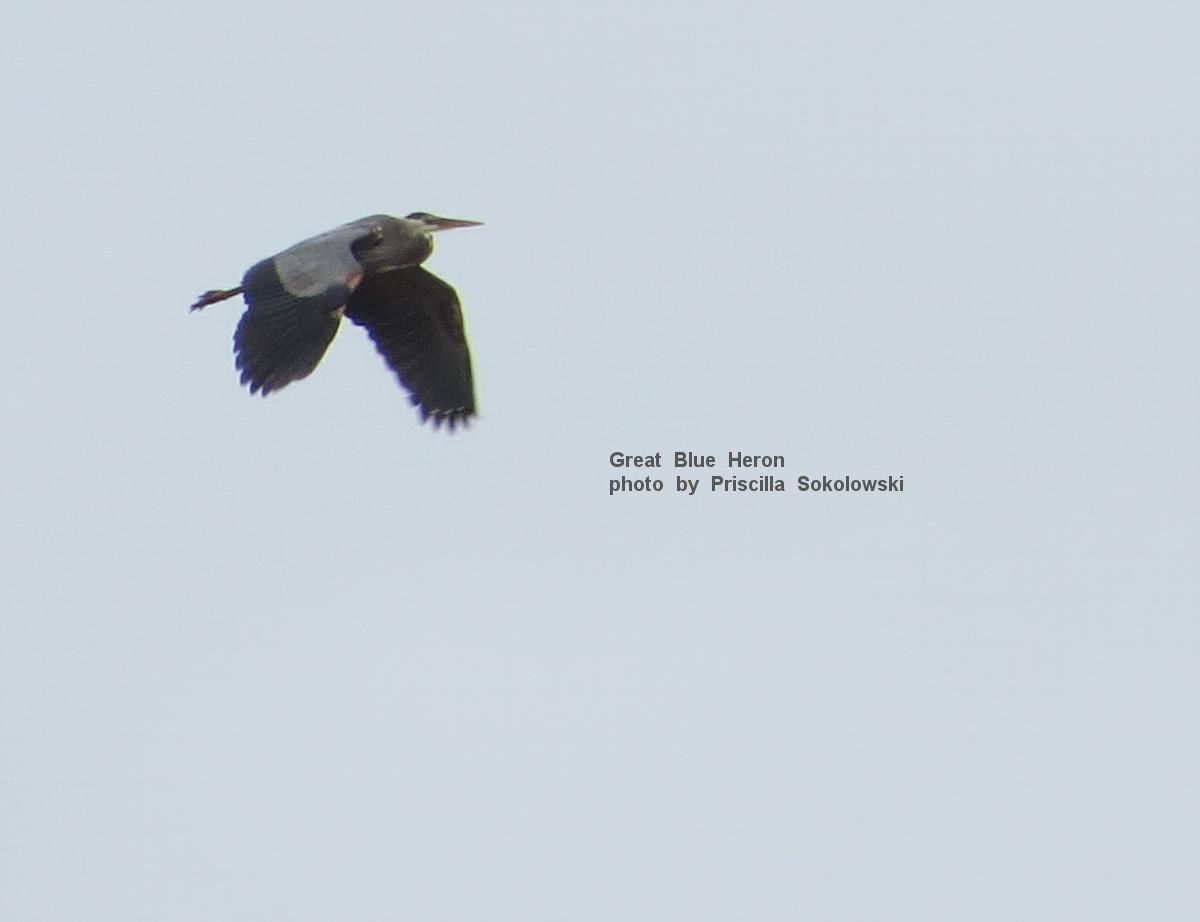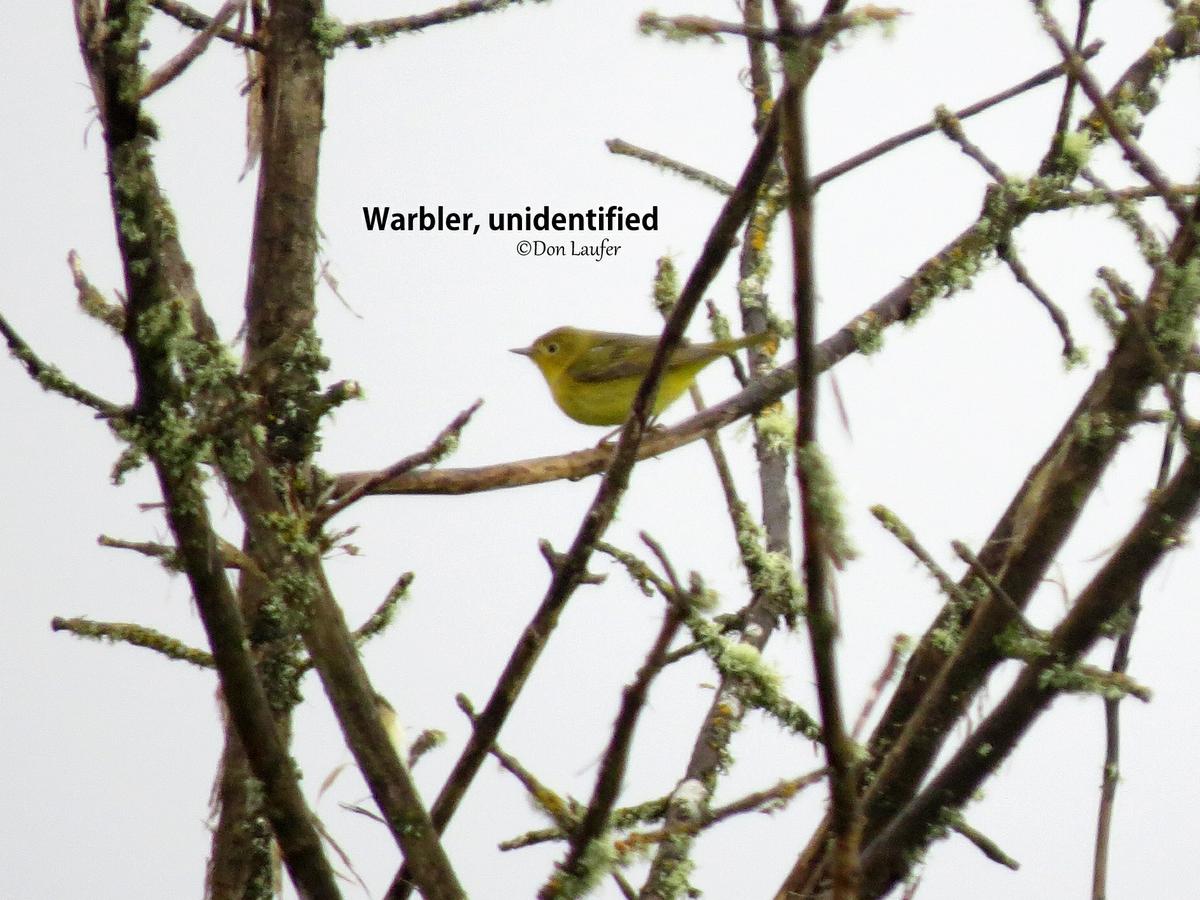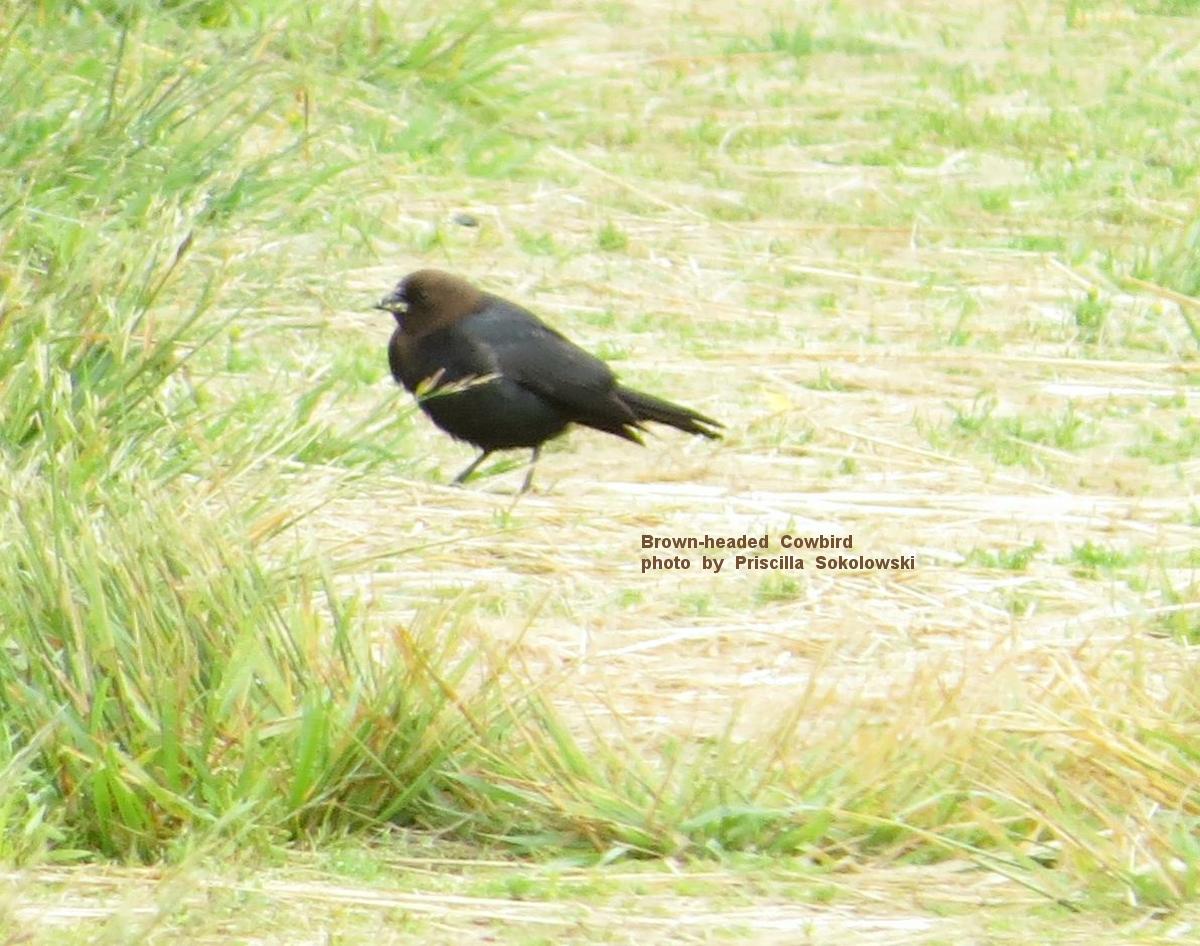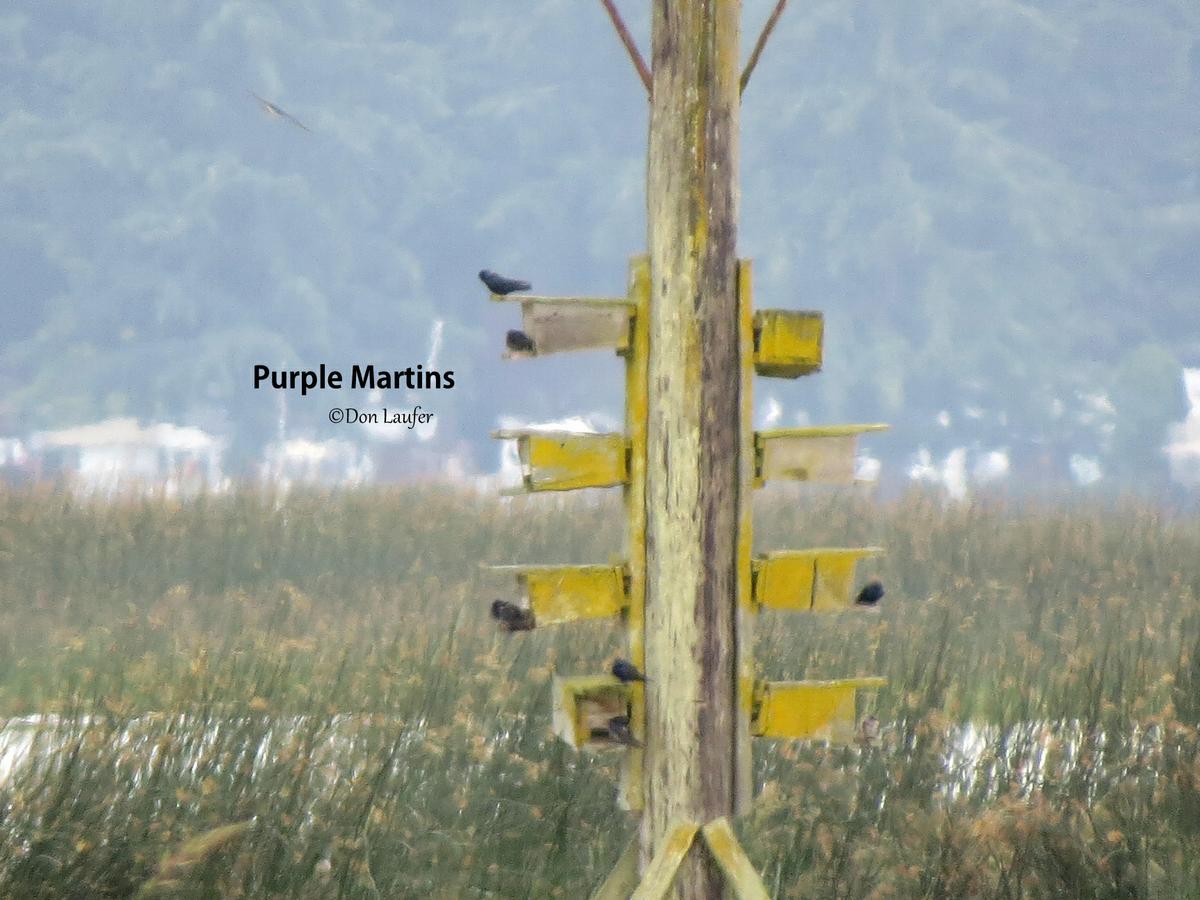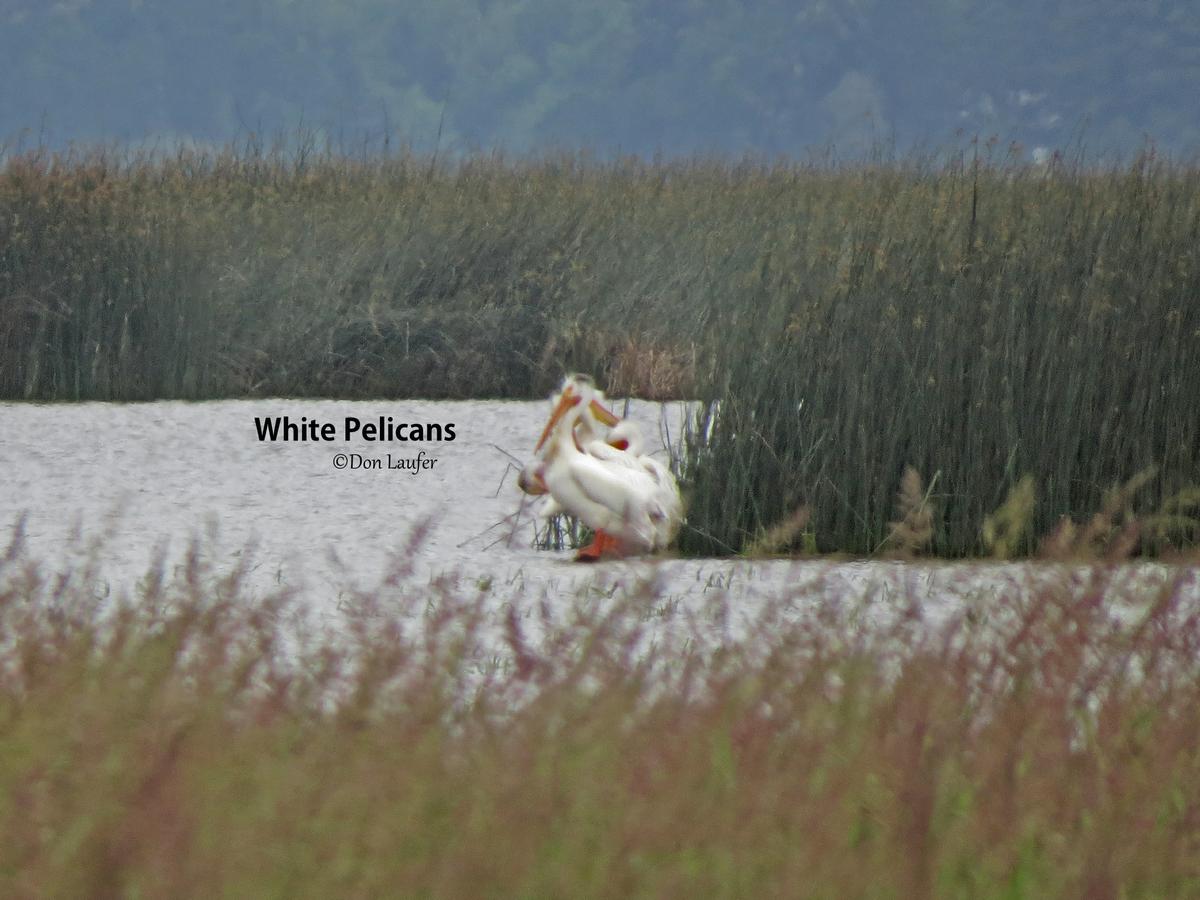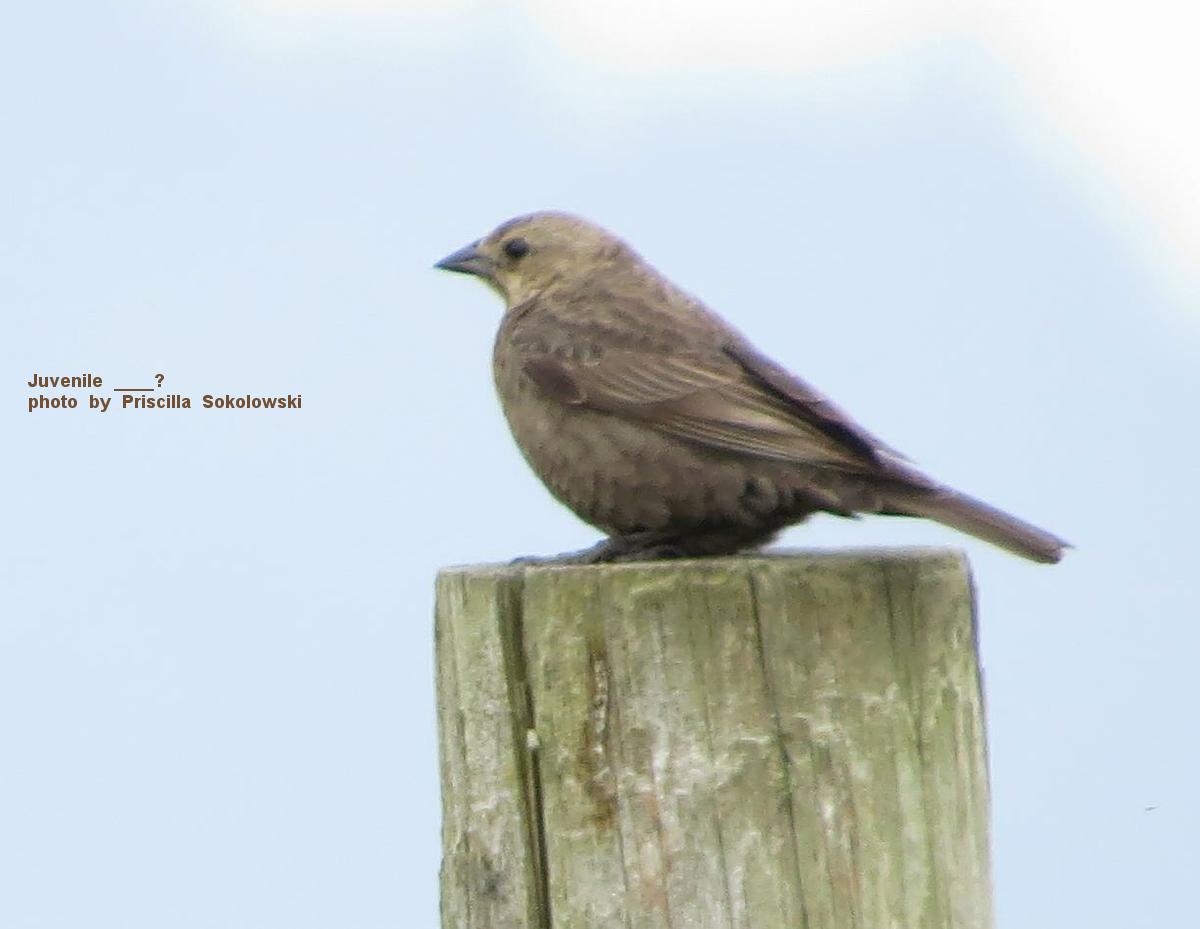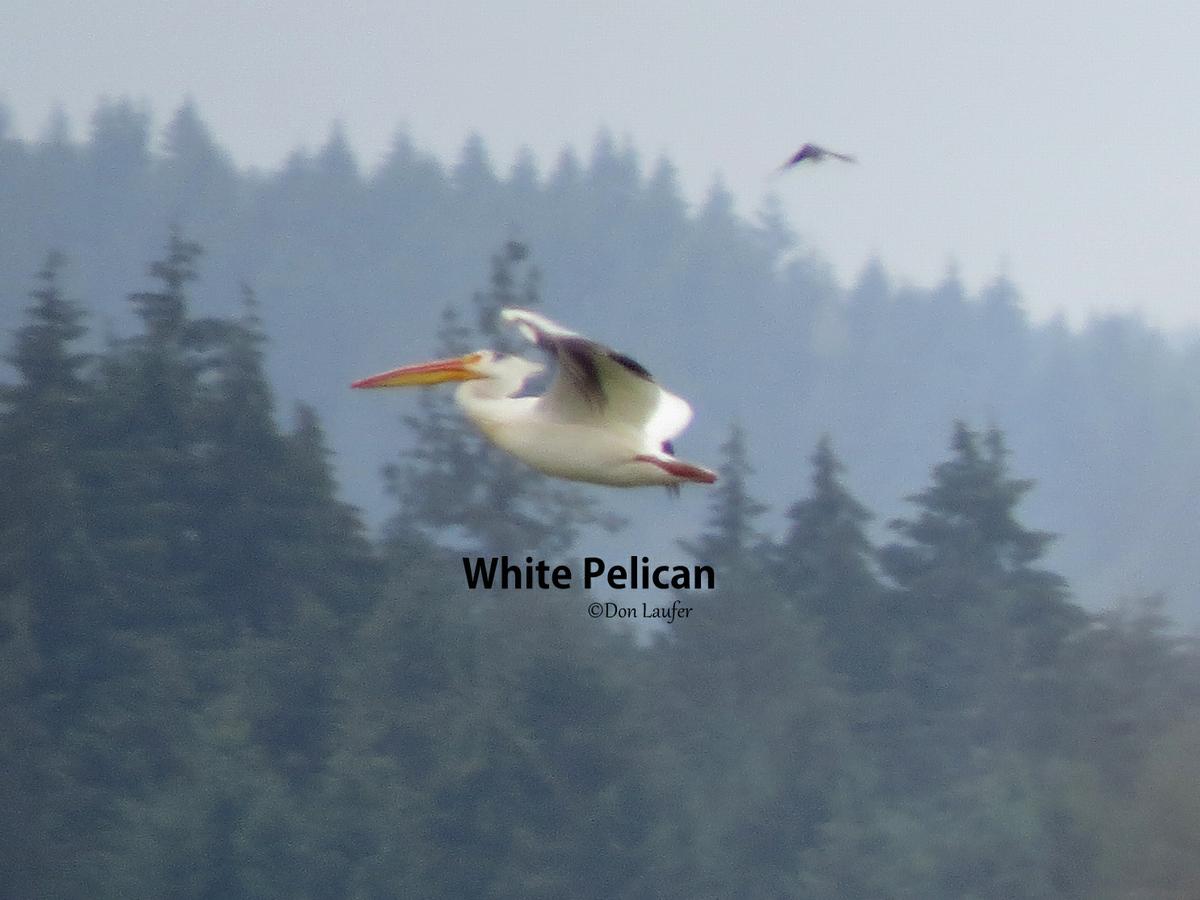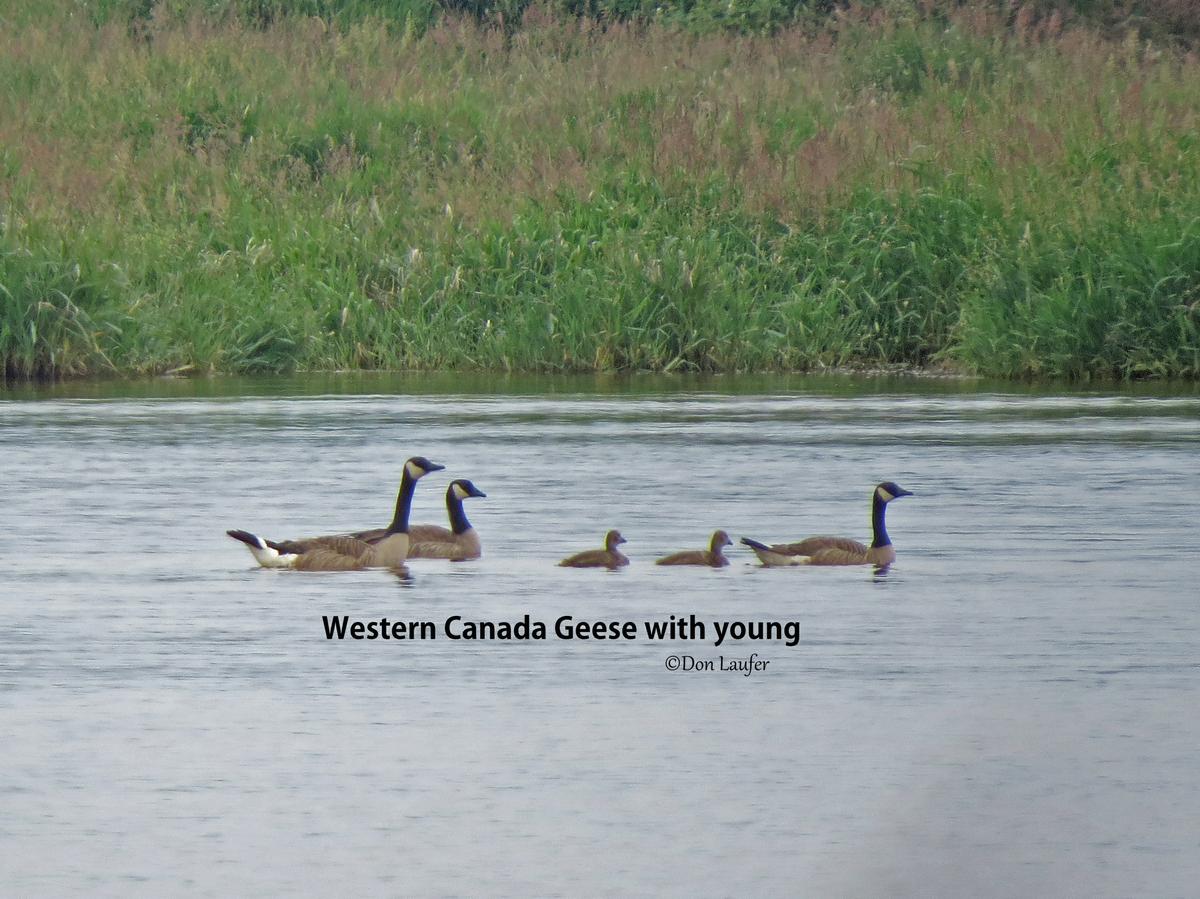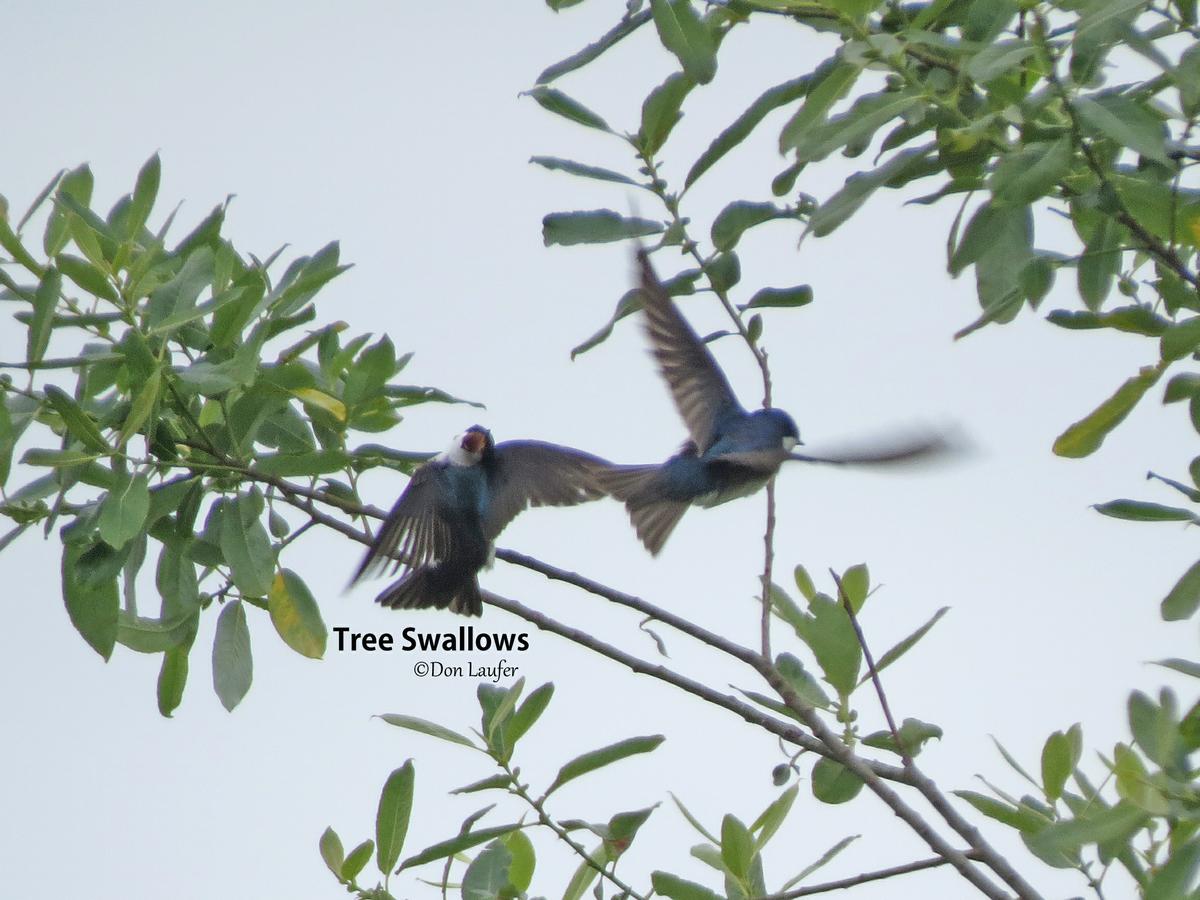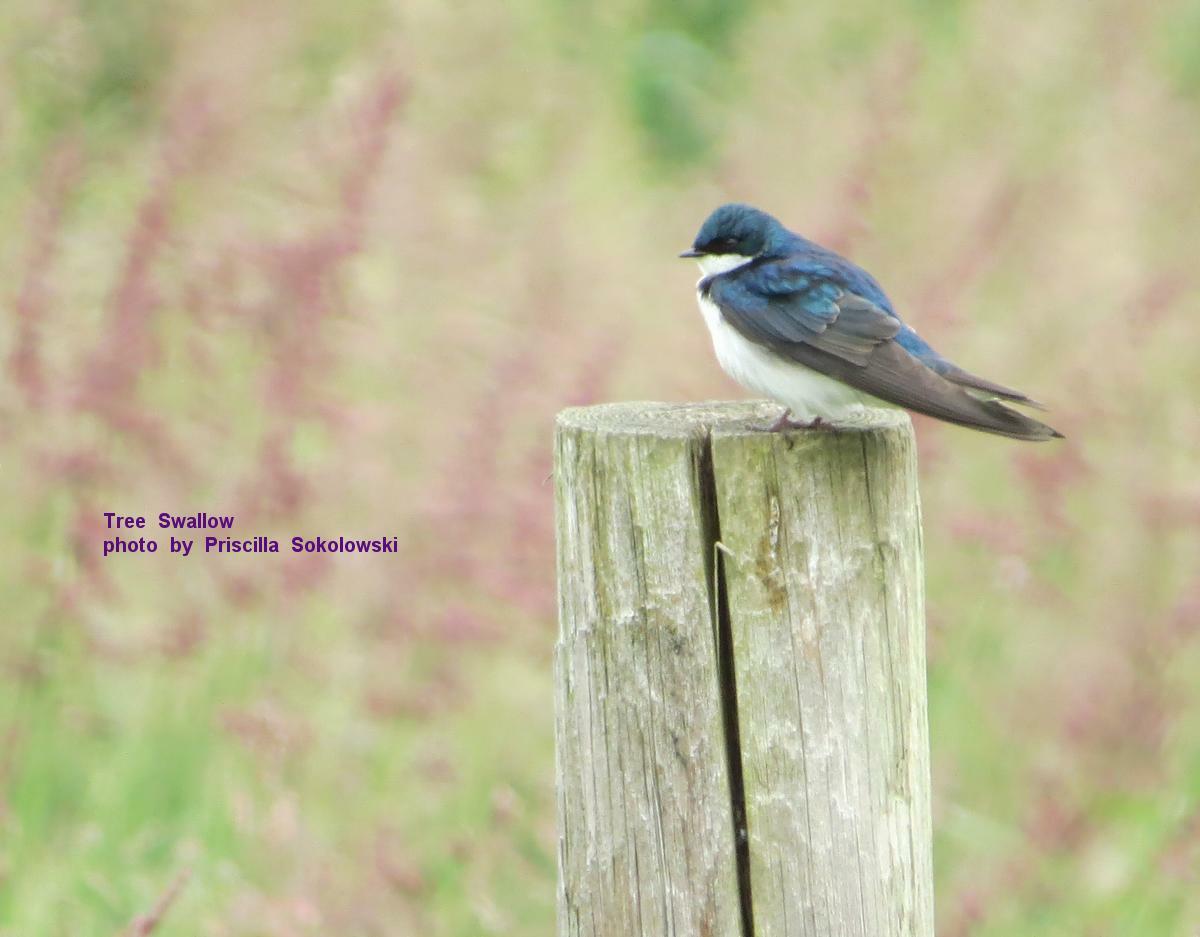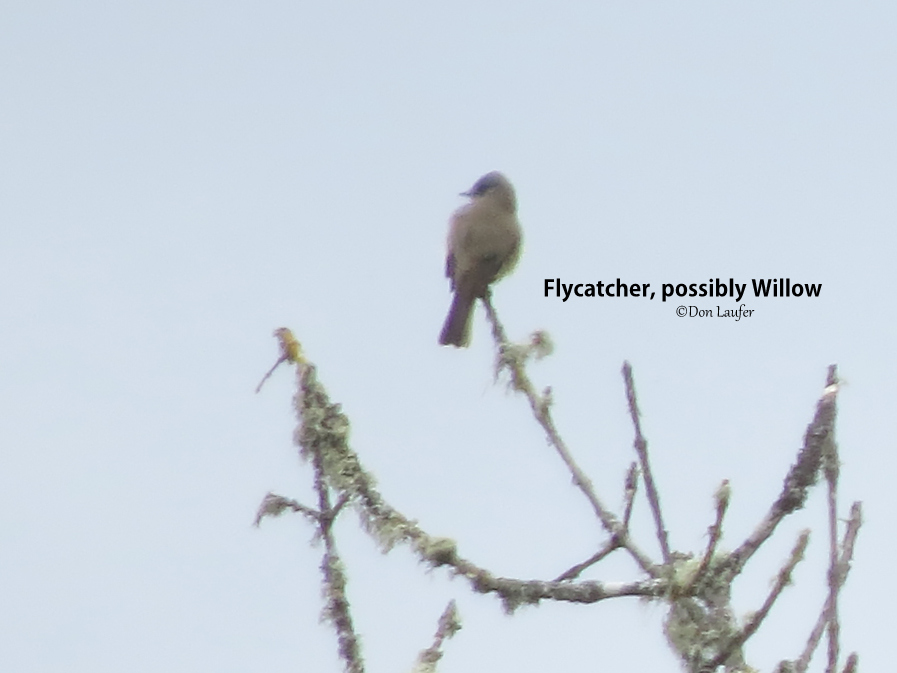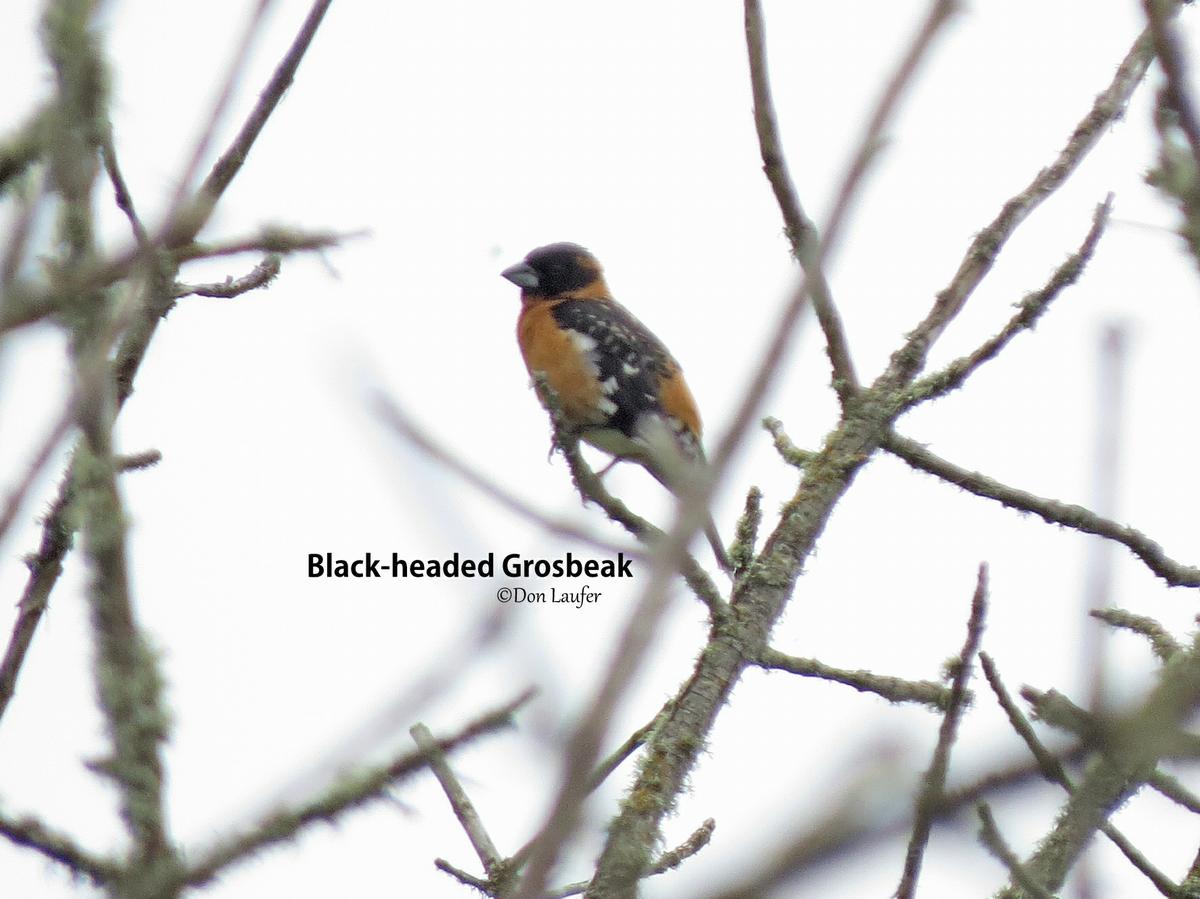While birding wide-open spaces like Fern Ridge often means seeing many birds which are quite far away for good photographs,
both Don and I somehow managed to come up with quite a decent set for you to enjoy.
There were of course some birds at ridiculous distances, such as the Ruddy Ducks and most of the Pelicans and the Purple
Martins, we include photos of them for the sake of helping folks remember what they saw, even if detail is lacking.
Notice the worn yellow feathers at the tip of the tail of this Cedar Waxwing.
Ever since we had Dave Irons
speak at BOGS about birds molting through various stages of their lives, I've become more aware that feathers do
in fact show wear and tear. Often in fact. And I've become aware that sometimes one sees newly grown-in
or still growing feathers with clean sharp edges and brilliant color.
Yet somehow, to my amazement, for decades I rarely if ever noticed these things about feathers. Funny how one's
perceptions can remain limited that way for so long. I suppose I was looking at the presence and absence of field marks
for the sake of identifying the birds, and not seeing much else. For all those years!


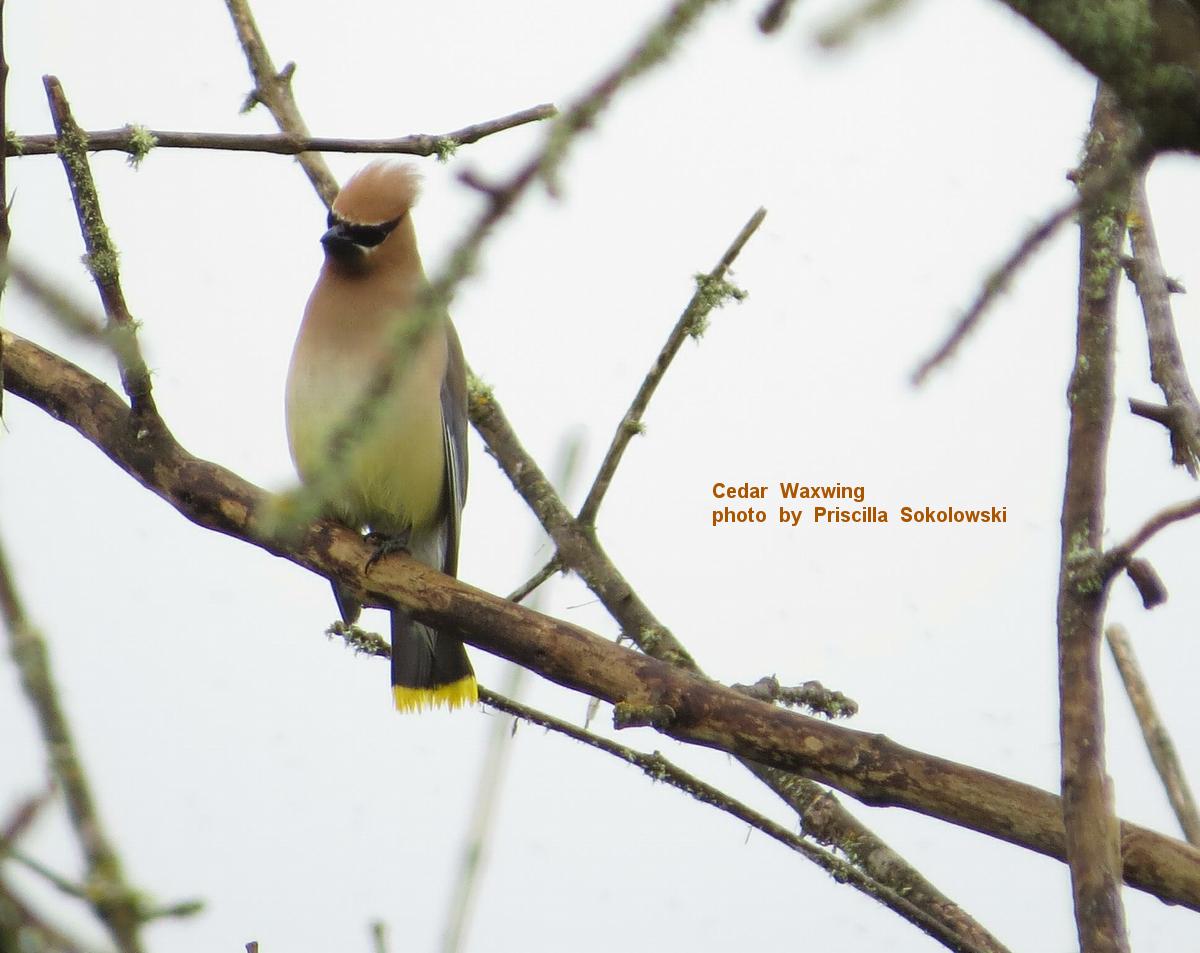


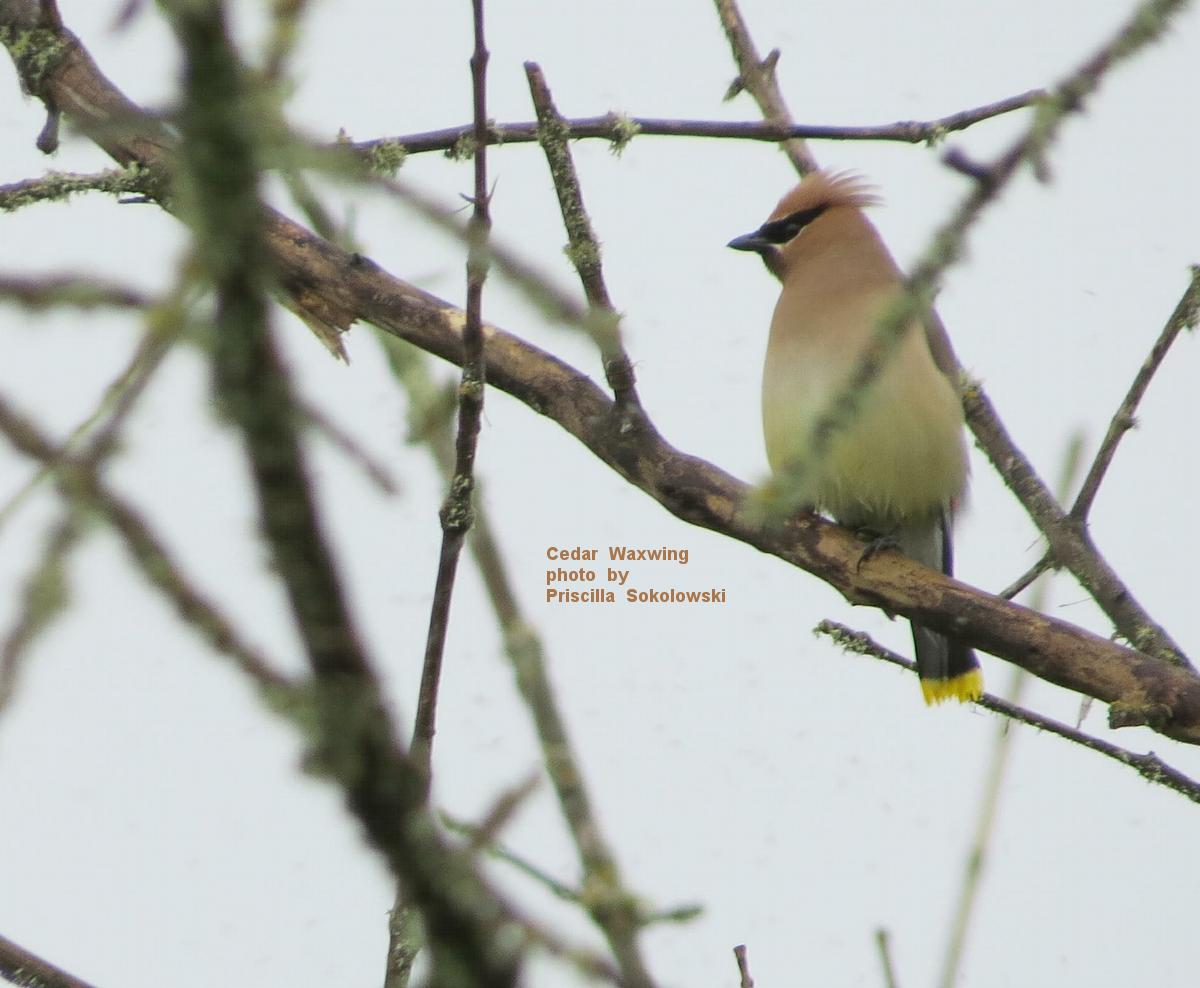


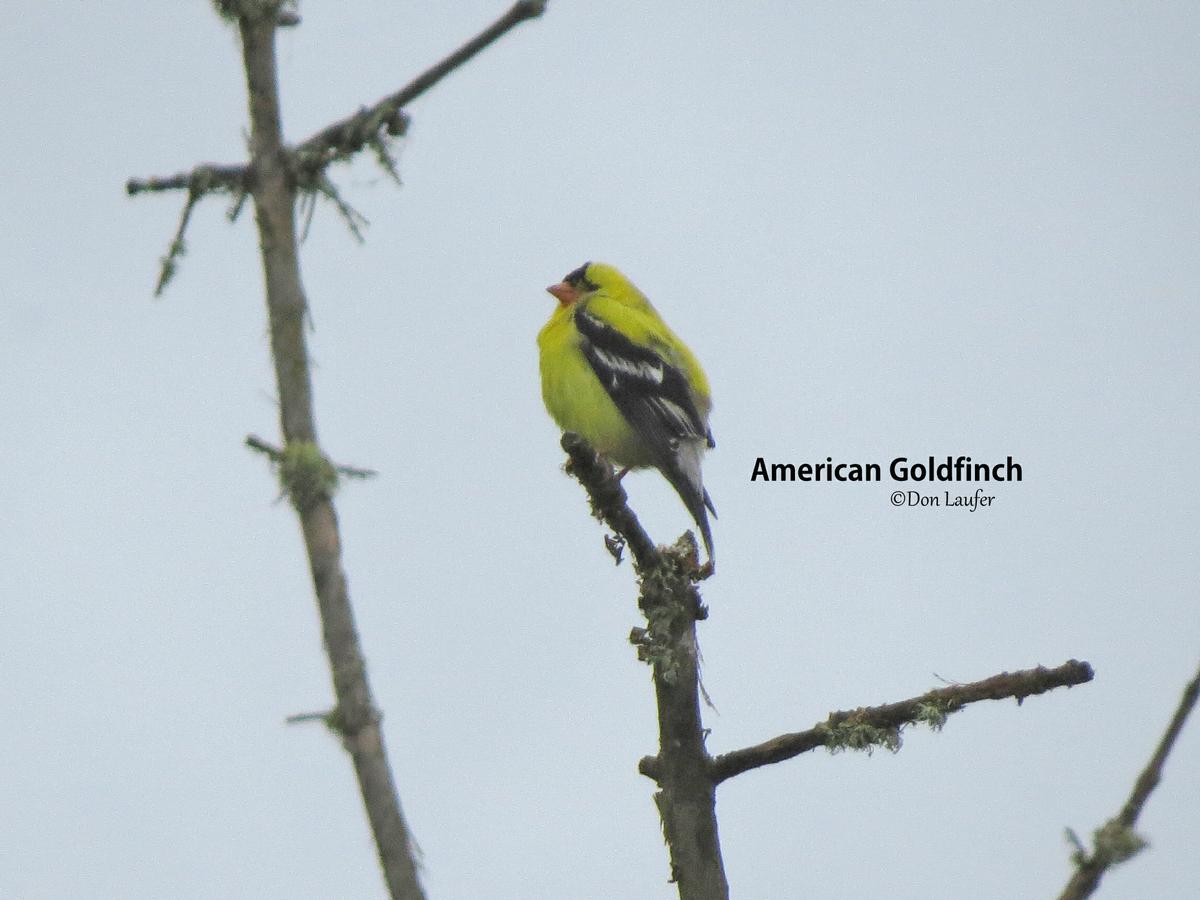


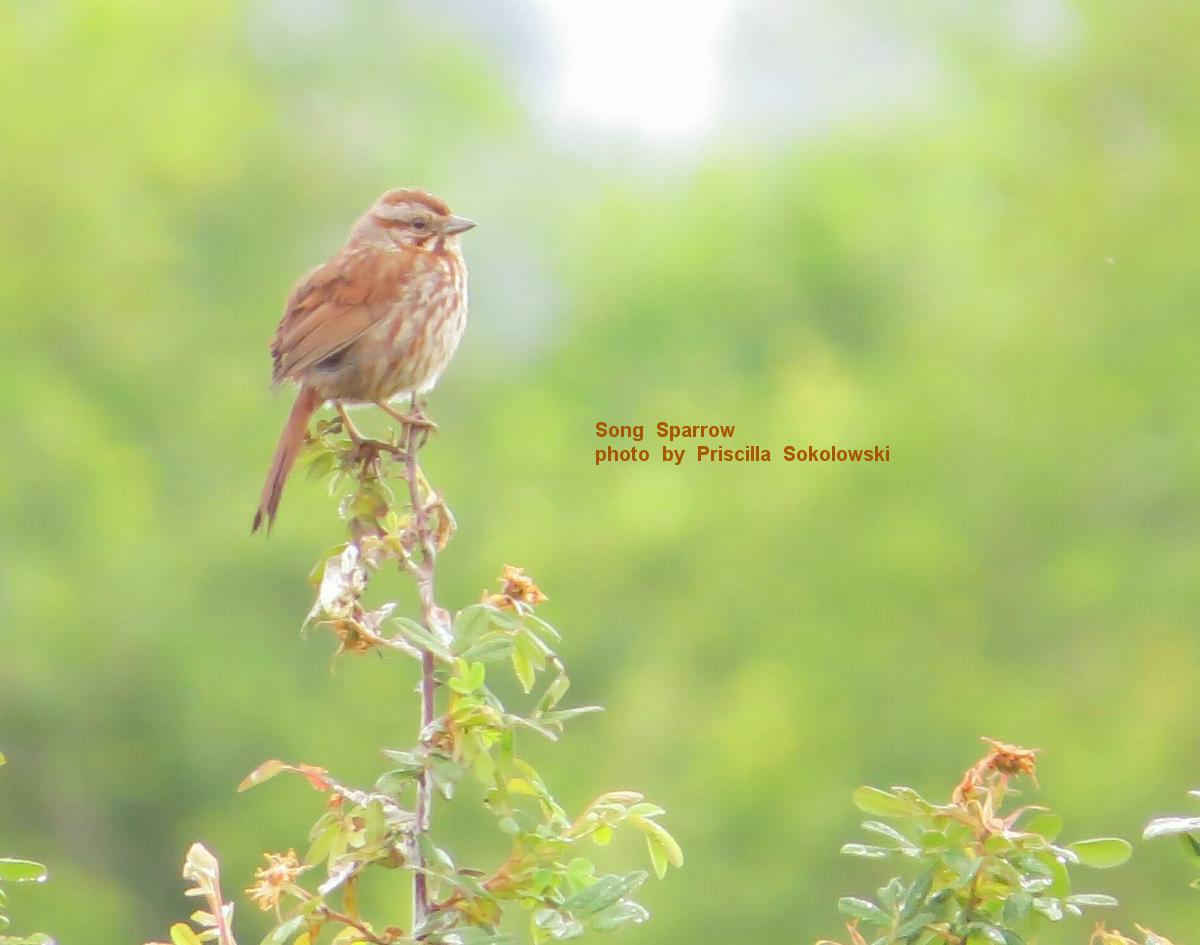


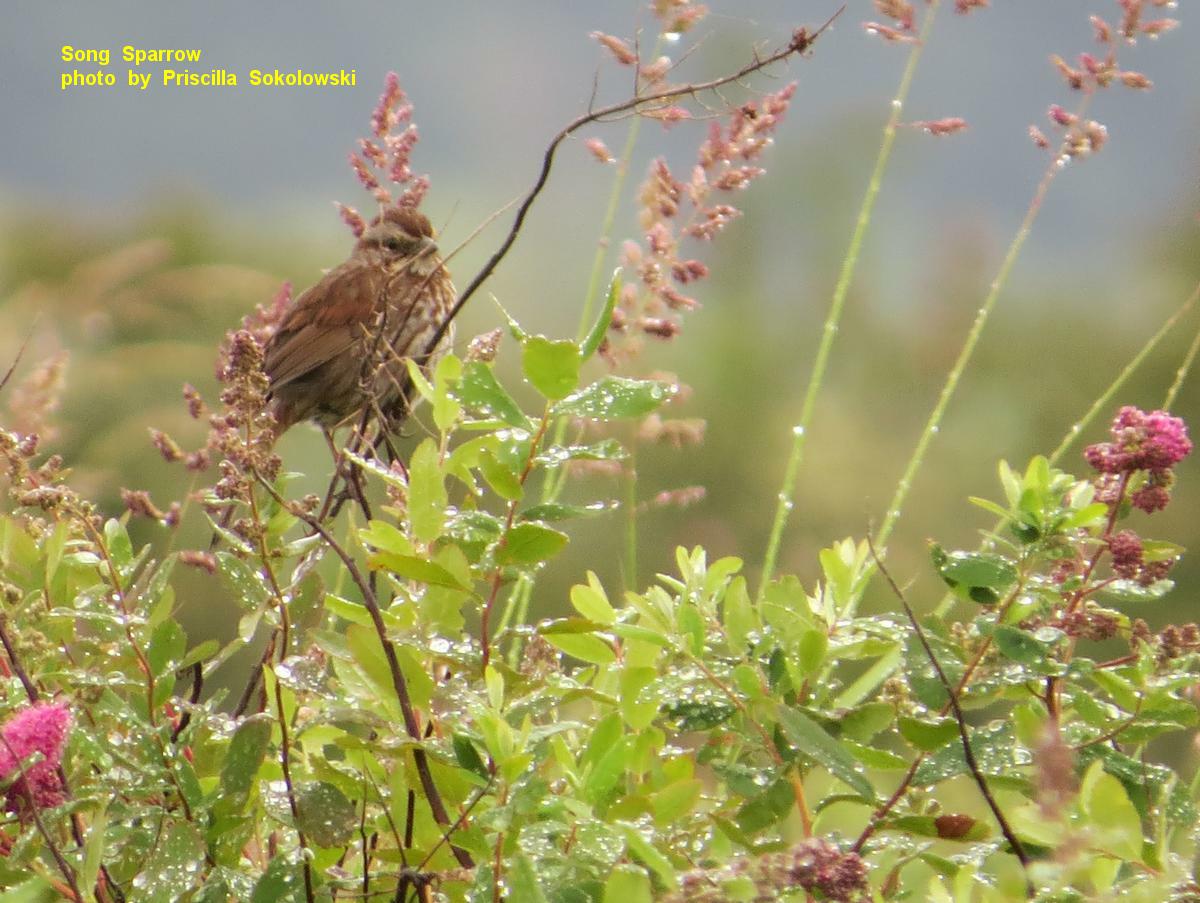



The next two photos give you the opportunity to compare American Bittern and Great Blue Heron flight profiles
If there is enough light, one can easily tell that the Bittern is brown compared to the gray of a Blue Heron. The Bittern's
wingtips are very dark gray as well. Often however, one does not have enough light to see the color clearly or the bird might be against too bright of a sky. What I find
works nearly all the time is to look at the line along the bottom of the bird from belly to throat. The Heron is a flat line
along the bottom while the Bittern has a larger bulge just behind the folded neck. It always reminds me of the
huge-bellied C-47 military transport plane I saw at an airshow in Eugne once.





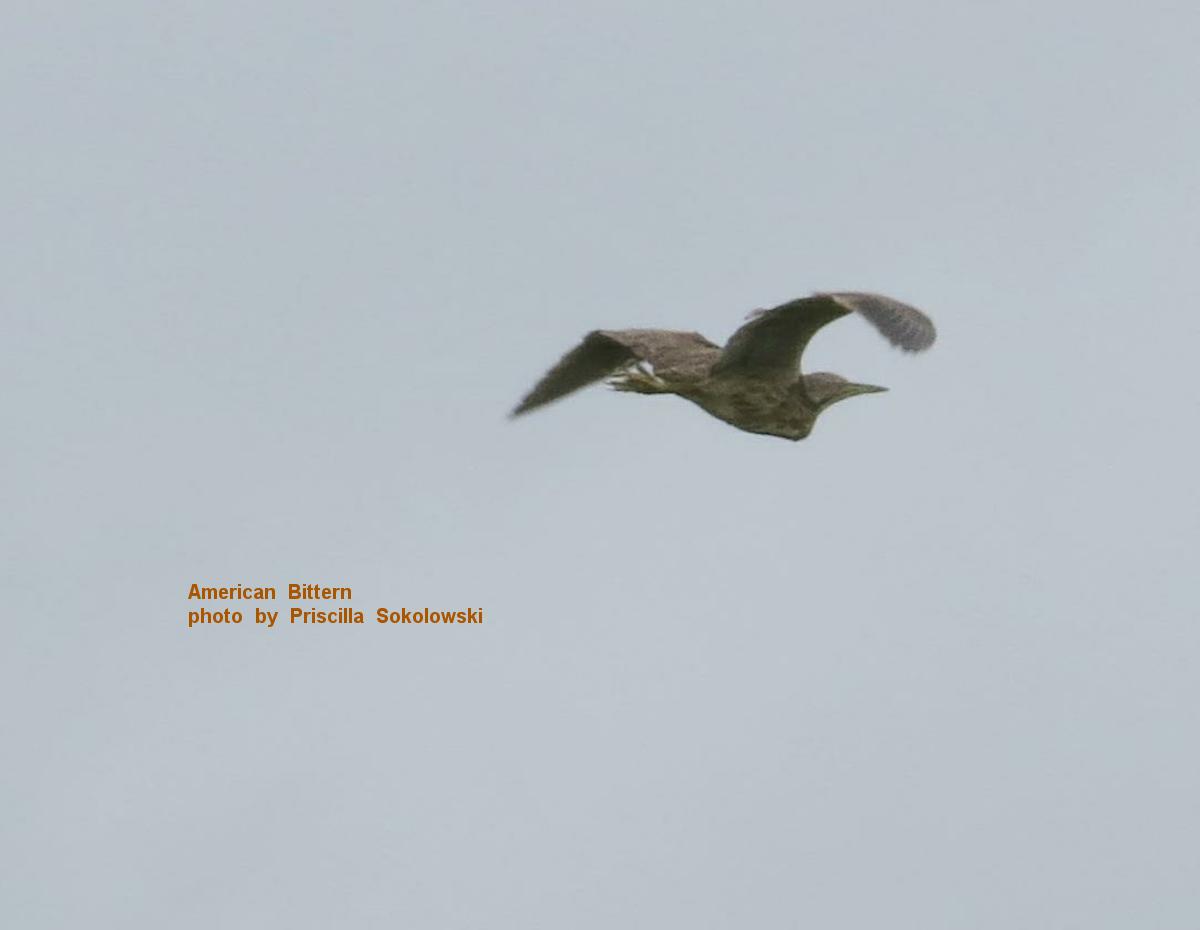

Don spent a considerable amount of time getting as good a photograph as he could manage from a Common Yellowthroat
which was calling at close range near the observation platform. The bird was not terribly cooperative. He came up with the
photo below, in which the bird is beautifully framed by blooming wildflowers.
I have to give Don credit for how much effort he routinely puts into getting photographs which really stand out.
Some birds inspire me to work extra hard that way, but many do not. For most birds I'm happy if I can get a fairly sharp
in-focus picture which shows some of the important features of a bird. Even getting that much can often be a challenge.


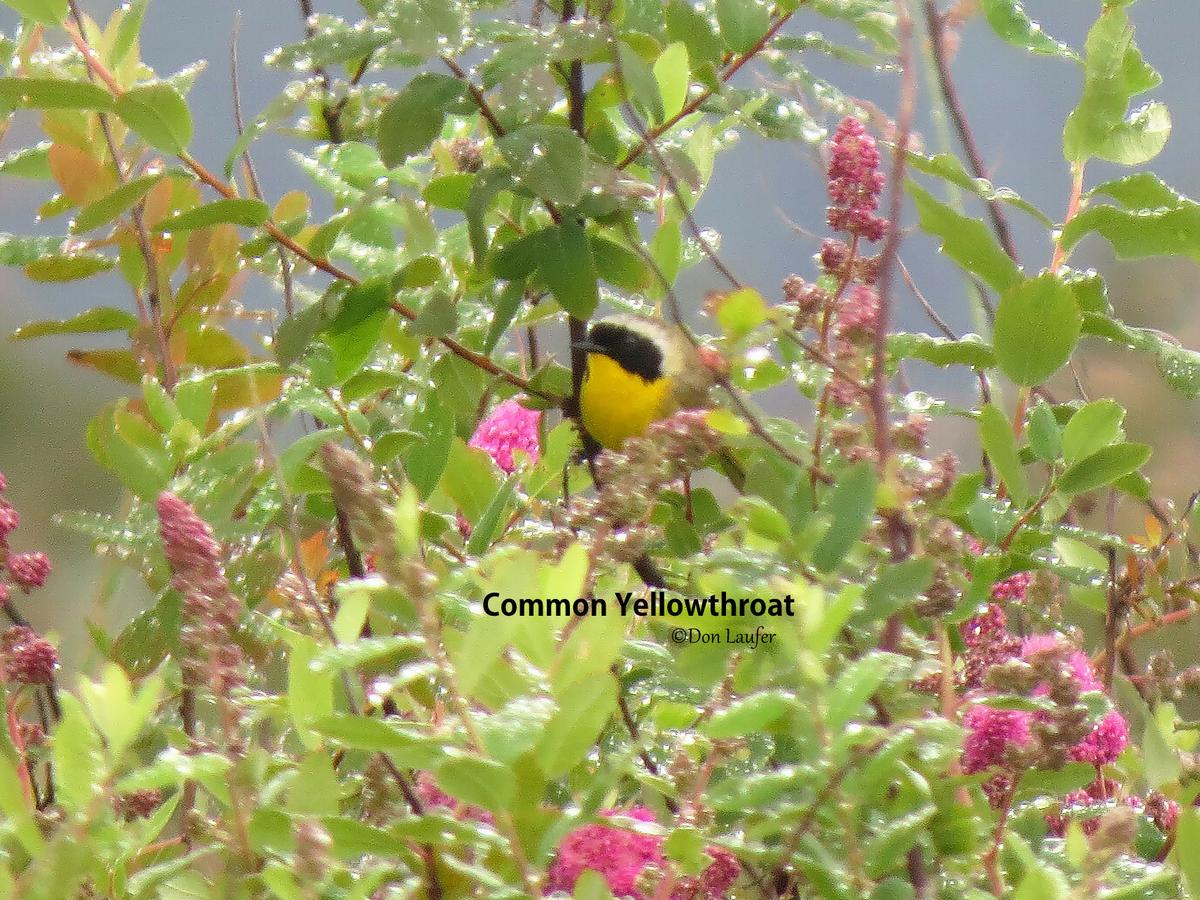

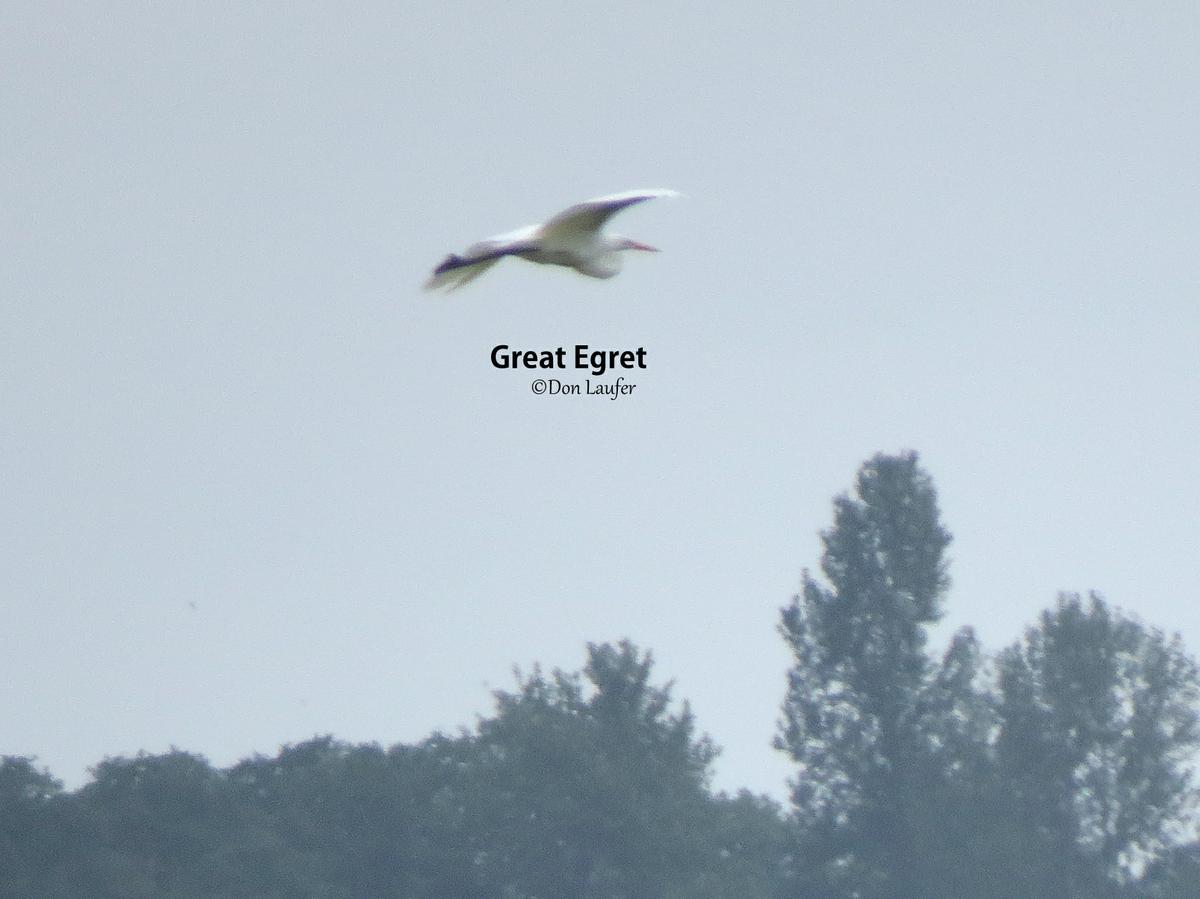

Most of the Common Yellowthroats we saw on this outing were out in plain sight in stubby unleafed branches. Steve
commented on this. So did Janet. When Janet and I went birding in this same place on March 18, we saw Yellowthroats
out in plain sight too and I was surprised because I had rarely seen that behavior. Last year, I did not see them come out
into the bare branches at the top of small shrubs until sometime in June. And it surprised me then because I'd not seen
them do that for more than a few seconds until then.
Marsh Wrens were chattering away all along Royal, but they were visible for only short times at the tops of the
cattails.
Every fifteen or so minutes we saw another Great Blue Heron flying by. I don't think anyone kept track of just how many
of them we saw.
I finally did some poking around and have come to the conclusion that the bird in the photo below
is a juvenile Cowbird. Notice how the forehead slopes smoothly right into the top of the bill.
Don's next photo is an action shot showing two Tree-Swallows. This is my favorite photograph from this trip.
Don and I discussed the Flycatcher in the following photo. We did not hear the bird call, or else we would very likely
know which species it was. Since the folded wings do not reach beyond the rump, it is probably not a Western Wood Pewee.
The Willow Flycatcher's wings reach only to the rump, as we see on this bird, but that alone does not rule out
some of the other empids which are challening to ID.
When we returned to the vicinity of the parking lot, the Black-headed Grosbeak - actually now two of them - were
still singing incessantly.
Bird list for walk at Fern Ridge Reservoir (Royal Ave. area), Thursday, May 26, 2016
Weather was heavy rain at first, then cloudy and cool.
1. Western grebe
2. American white pelican
3. American bittern
4. Great blue heron
5. Great egret
6. Canada goose
7. Gadwall
8. Hooded merganser
9. Ruddy duck
10. Bald eagle (Beth Ann saw this at the end of our walk)
11. Black tern
12. Turkey vulture
13. Mourning dove
14. American crow
15. Tree swallow
16. Violet-green swallow
17. Barn swallow
18. Cliff swallow
19. Purple martin
20. Marsh wren
21. European starling
22. Cedar waxwing
23. Common yellowthroat
24. Song sparrow
25. Savannah sparrow
26. Black-headed grosbeak
27. Red-winged blackbird
28. Brown-headed cowbird
29. American goldfinch
At the woodpecker woods area:
30. Acorn woodpecker
31. White-breasted nuthatch
32. Western wood peewee
Generally if you want to know what is happening next at BOGS, or want to see the latest photos/reports,
you can find these on the HOME page:
http://priscillanhk.com/index.html
Enjoy!
Priscilla
Questions about BOGS? EMAIL: priscilla@blog.priscillanhk.com







